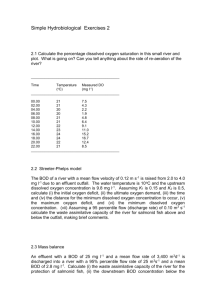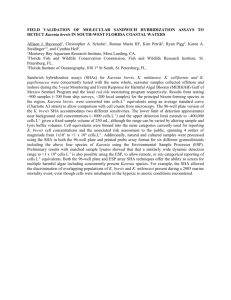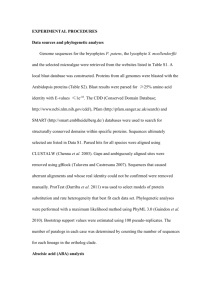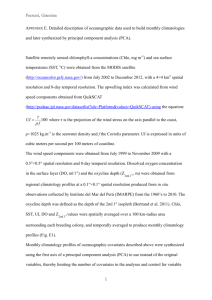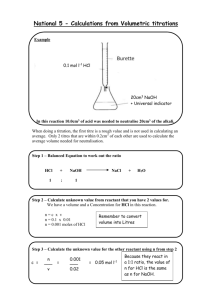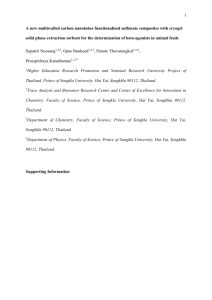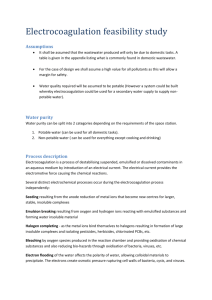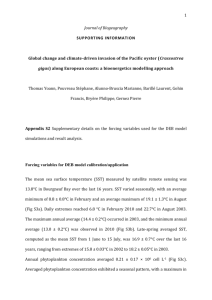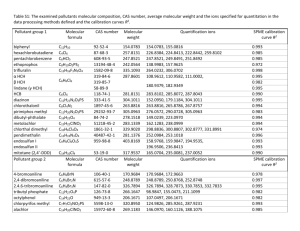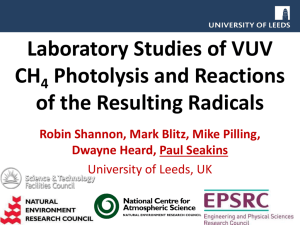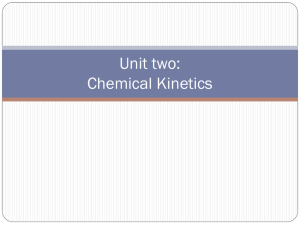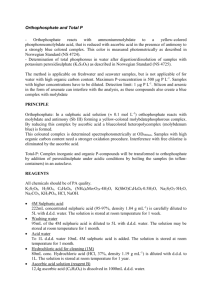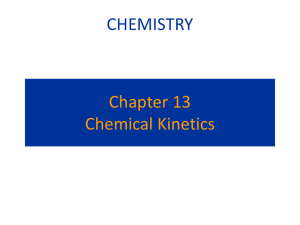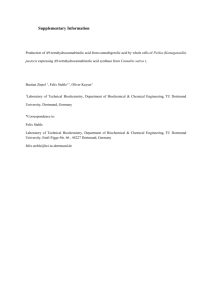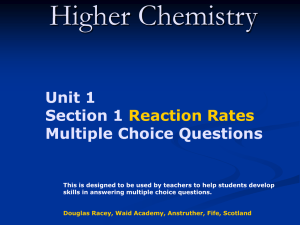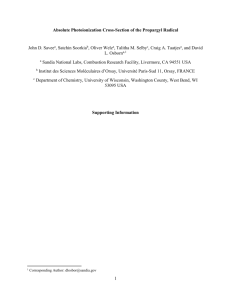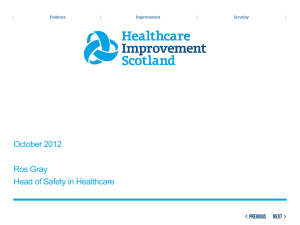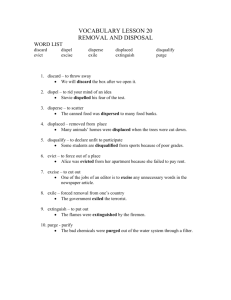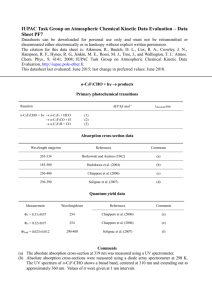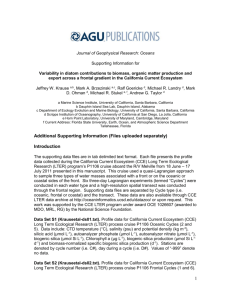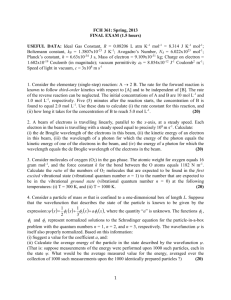Ruthenium(II)-tris-bipyridine/Titanium Dioxide Codoped Zeolite Y
advertisement
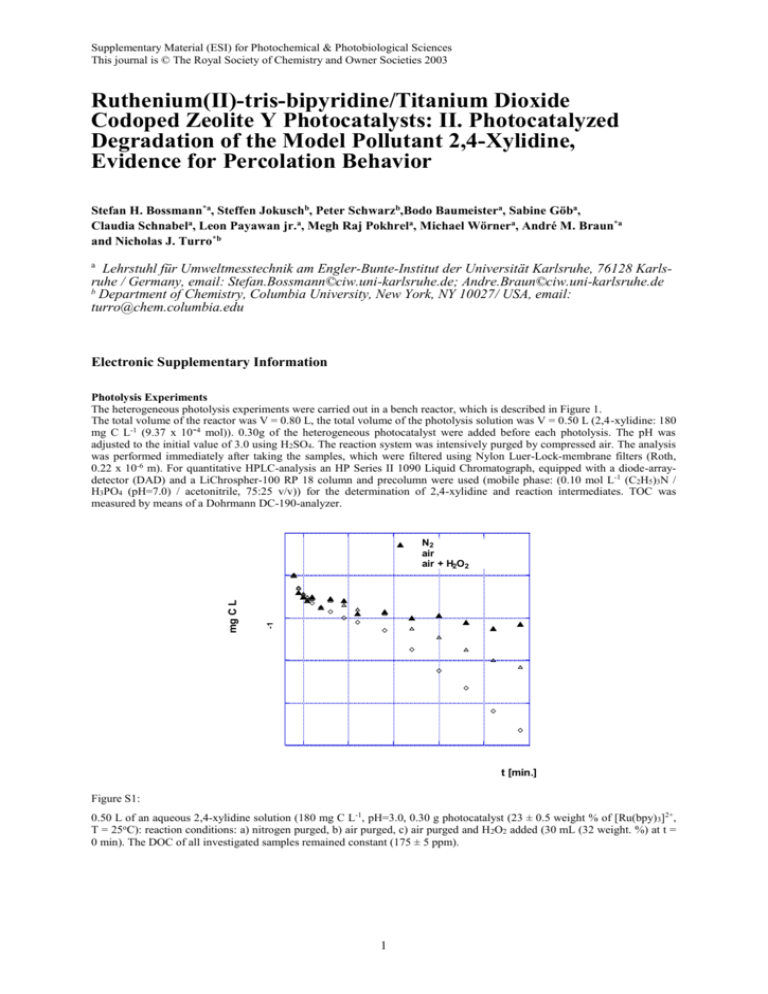
Supplementary Material (ESI) for Photochemical & Photobiological Sciences This journal is © The Royal Society of Chemistry and Owner Societies 2003 Ruthenium(II)-tris-bipyridine/Titanium Dioxide Codoped Zeolite Y Photocatalysts: II. Photocatalyzed Degradation of the Model Pollutant 2,4-Xylidine, Evidence for Percolation Behavior Stefan H. Bossmann*a, Steffen Jokuschb, Peter Schwarzb,Bodo Baumeistera, Sabine Göba, Claudia Schnabela, Leon Payawan jr.a, Megh Raj Pokhrela, Michael Wörnera, André M. Braun*a and Nicholas J. Turro*b a Lehrstuhl für Umweltmesstechnik am Engler-Bunte-Institut der Universität Karlsruhe, 76128 Karlsruhe / Germany, email: Stefan.Bossmann©ciw.uni-karlsruhe.de; Andre.Braun©ciw.uni-karlsruhe.de b Department of Chemistry, Columbia University, New York, NY 10027/ USA, email: turro@chem.columbia.edu Electronic Supplementary Information Photolysis Experiments The heterogeneous photolysis experiments were carried out in a bench reactor, which is described in Figure 1. The total volume of the reactor was V = 0.80 L, the total volume of the photolysis solution was V = 0.50 L (2,4-xylidine: 180 mg C L-1 (9.37 x 10-4 mol)). 0.30g of the heterogeneous photocatalyst were added before each photolysis. The pH was adjusted to the initial value of 3.0 using H2SO4. The reaction system was intensively purged by compressed air. The analysis was performed immediately after taking the samples, which were filtered using Nylon Luer-Lock-membrane filters (Roth, 0.22 x 10-6 m). For quantitative HPLC-analysis an HP Series II 1090 Liquid Chromatograph, equipped with a diode-arraydetector (DAD) and a LiChrospher-100 RP 18 column and precolumn were used (mobile phase: (0.10 mol L-1 (C2H5)3N / H3PO4 (pH=7.0) / acetonitrile, 75:25 v/v)) for the determination of 2,4-xylidine and reaction intermediates. TOC was measured by means of a Dohrmann DC-190-analyzer. -1 mg C L N2 air air + H2O2 t [min.] Figure S1: 0.50 L of an aqueous 2,4-xylidine solution (180 mg C L-1, pH=3.0, 0.30 g photocatalyst (23 ± 0.5 weight % of [Ru(bpy) 3]2+, T = 25oC): reaction conditions: a) nitrogen purged, b) air purged, c) air purged and H 2O2 added (30 mL (32 weight. %) at t = 0 min). The DOC of all investigated samples remained constant (175 ± 5 ppm). 1 Supplementary Material (ESI) for Photochemical & Photobiological Sciences This journal is © The Royal Society of Chemistry and Owner Societies 2003 -1 mg C L N2 air t [min.] Figure S2: 0.50 L of an aqueous 2,4-xylidine solution (180 mg C L-1, pH=3.0, 0.30 g photocatalyst (22.5 ± 1.0 weight % of [Ru(bpy) 3]2+, 34.5±0.5 weight % of TiO2); T = 25oC): reaction conditions: a) nitrogen purged, b) air purged, c) air purged. The DOC remained constant during the nitrogen-purged reaction (175 ± 5 mg C L-1). It decreased to 150 ± 10 mg C L-1 after 240 min. of photolysis under air. 2
